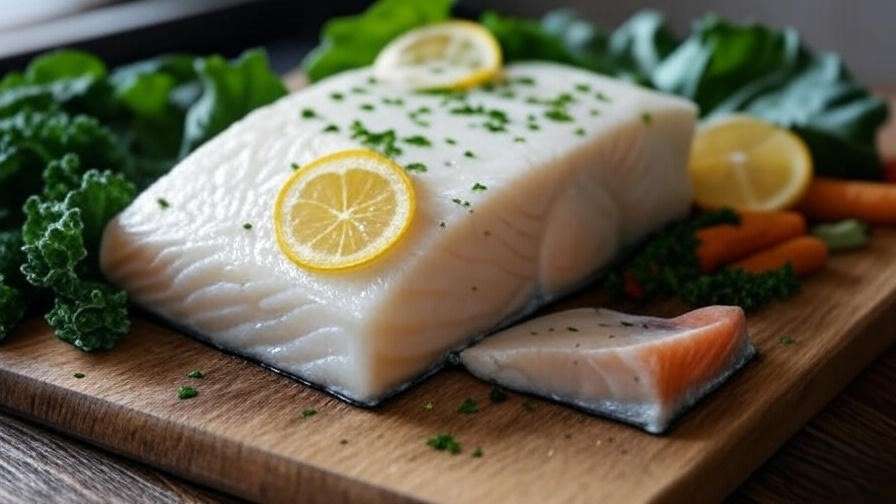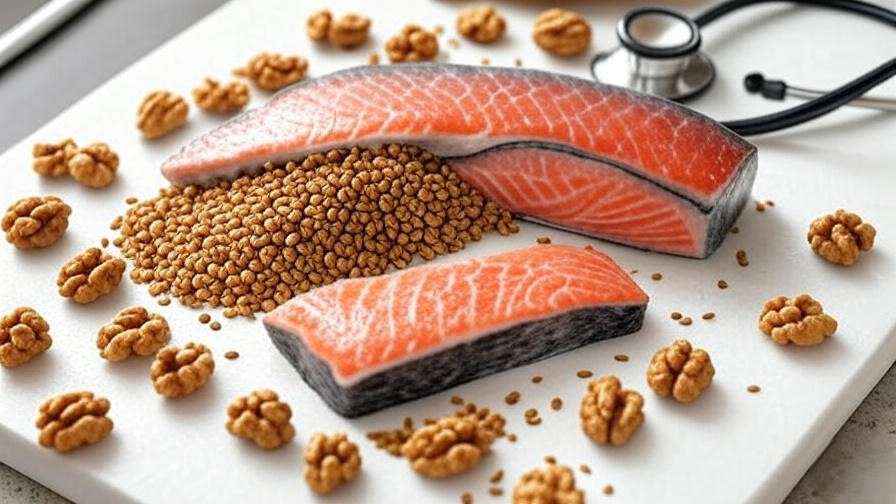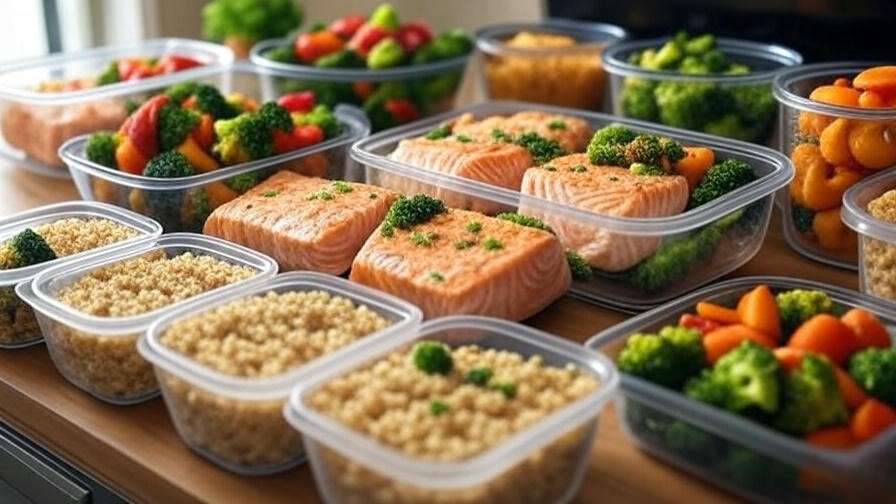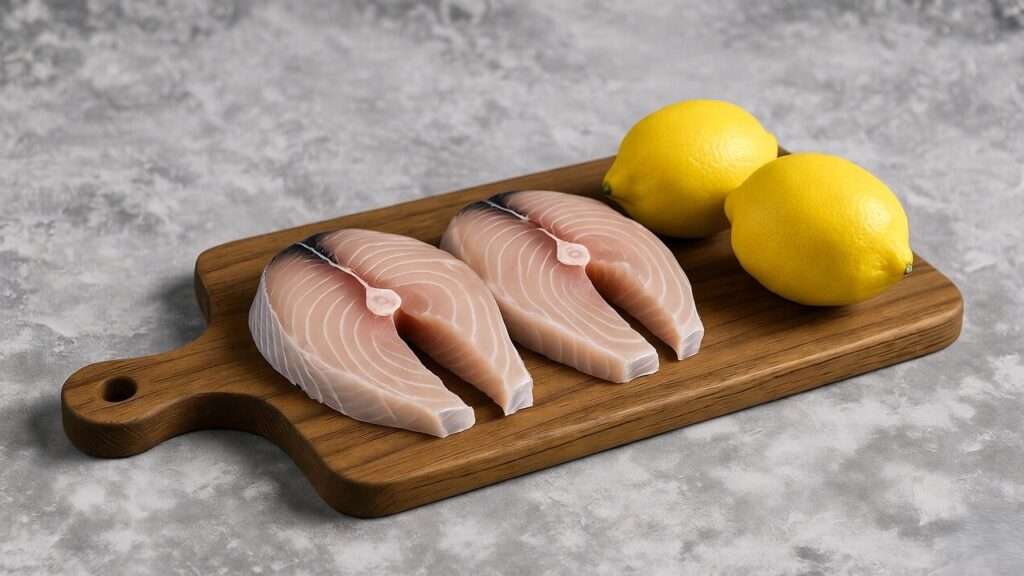Did you know that a single serving of white salmon fish can deliver nearly 70% of your daily omega-3 needs, all while aligning with sustainable, plant-based principles? As plant-based diets soar in popularity—over 6% of Americans now identify as vegan or vegetarian, according to a 2023 Gallup poll—many are seeking nutrient-rich, eco-conscious foods to bridge dietary gaps. White salmon fish, with its lean protein and heart-healthy fats, is emerging as a surprising ally for those embracing a plant-based or pescatarian lifestyle. Whether you’re curious about its health benefits, eager to try new recipes, or passionate about sustainable eating, this guide unlocks everything you need to know about incorporating white salmon fish into your diet. Backed by nutritional science and expert insights from dietitians and sustainability advocates, we’ll explore why this versatile fish is a game-changer for health-conscious, eco-minded eaters.
What Is White Salmon Fish?
Defining White Salmon Fish
White salmon fish, often referring to varieties like wild-caught coho or specific king salmon with naturally lighter flesh, is a lesser-known gem in the seafood world. Unlike the vibrant pink or orange hues of sockeye or farmed Atlantic salmon, white salmon boasts a pale, creamy flesh due to its unique diet, which includes fewer pigment-rich krill. Its flavor is milder and less “fishy,” making it a versatile choice for plant-based eaters transitioning to include fish. Found primarily in the Pacific Northwest, particularly along the coasts of Alaska and British Columbia, white salmon is prized for its delicate texture and adaptability in recipes ranging from salads to sushi.

Nutritional Profile of White Salmon Fish
White salmon fish is a nutritional powerhouse, offering a robust profile that complements plant-based diets. A 100-gram serving provides approximately:
| Nutrient | Amount |
|---|---|
| Calories | 140 kcal |
| Protein | 21 g |
| Total Fat | 6 g |
| Omega-3 Fatty Acids | 1.8 g |
| Vitamin D | 435 IU (11 µg) |
| Vitamin B12 | 3 µg (125% DV) |
Source: USDA FoodData Central
Compared to plant-based proteins like tofu (8 g protein per 100 g) or lentils (9 g protein per 100 g), white salmon delivers more bioavailable protein and essential nutrients like vitamin B12, often deficient in strict vegan diets. Its omega-3 fatty acids—EPA and DHA—support heart and brain health, setting it apart from plant-based omega-3 sources like flaxseeds, which provide ALA with lower conversion rates to EPA/DHA. “White salmon is an excellent choice for those seeking nutrient density without compromising sustainability,” says Dr. Emily Harper, a registered dietitian specializing in plant-based nutrition.
Why White Salmon Fish Fits a Plant-Based Diet
Bridging Plant-Based and Pescatarian Lifestyles
For many, a plant-based diet means minimizing animal products while maximizing health and environmental benefits. Pescatarianism, which includes fish alongside plant foods, aligns seamlessly with this ethos for those open to incorporating seafood. White salmon fish serves as a bridge, offering a nutrient-dense protein source that complements plant-based staples like quinoa, kale, and legumes. It’s particularly appealing for flexitarians or those transitioning from veganism, as it provides a familiar protein structure with ethical and health-focused appeal. By choosing sustainably sourced white salmon, you can honor plant-based principles while addressing nutritional needs.
Addressing Common Concerns
A common question among plant-based eaters is, “Can fish like white salmon truly fit into a plant-based diet?” While strict vegans avoid all animal products, many plant-based eaters adopt a flexible approach, prioritizing health and sustainability over rigid rules. White salmon fish can be a thoughtful addition for those seeking to balance ethical eating with nutritional demands. To address concerns from vegan peers, emphasize your commitment to sustainability and health. For example, explain how choosing wild-caught white salmon supports eco-friendly fisheries and reduces reliance on resource-intensive crops like soy or almonds.
Tip: When discussing your dietary choices, focus on shared values like environmental stewardship to foster understanding and respect.
Health Benefits for Plant-Based Eaters
White salmon fish shines as a source of heart-healthy omega-3s, which reduce inflammation and lower the risk of cardiovascular disease, according to a 2022 study in the Journal of the American Heart Association. Its high vitamin B12 content helps prevent deficiencies common in vegan diets, supporting nerve function and energy production. Additionally, its vitamin D and lean protein promote bone health and muscle maintenance—key concerns for plant-based eaters. Unlike many plant proteins, white salmon’s nutrients are highly bioavailable, meaning your body absorbs them efficiently. For those worried about dietary gaps, white salmon is a practical, nutrient-packed solution.
Sustainability and Ethical Considerations
Why Sustainability Matters
The environmental impact of food choices is a growing concern, with overfishing and unsustainable aquaculture threatening marine ecosystems. According to the United Nations’ Food and Agriculture Organization, 34% of global fish stocks are overfished. Choosing sustainable seafood like white salmon fish mitigates this impact, preserving oceans for future generations. Certifications like the Marine Stewardship Council (MSC) ensure fish is sourced responsibly, minimizing harm to marine habitats and reducing bycatch (unintended species caught during fishing).

Is White Salmon Fish Eco-Friendly?
Wild-caught white salmon, particularly from Alaska’s well-managed fisheries, ranks among the most sustainable seafood options. The Monterey Bay Aquarium’s Seafood Watch program rates Alaska’s coho salmon as a “Best Choice” due to strict regulations and healthy stock levels. In contrast, farmed salmon often involves crowded pens, antibiotic use, and higher environmental footprints. “Opting for wild-caught white salmon supports ecosystems and local communities,” says marine biologist Dr. Sarah Lin, who studies Pacific fisheries. For example, Alaska’s Bristol Bay fishery employs sustainable practices, ensuring long-term viability of salmon populations.
Reducing Environmental Impact
To make eco-conscious choices, look for MSC-certified or Seafood Watch-recommended white salmon. Check labels for origin (e.g., “Wild-Caught Alaskan Coho”) and avoid vague terms like “Atlantic salmon,” which may indicate farming. Supporting local fisheries or co-ops also reduces carbon footprints associated with long-distance shipping. Example: The Sitka Salmon Shares program connects consumers directly with Alaskan fishermen, ensuring traceability and sustainability. By prioritizing these practices, you contribute to healthier oceans while enjoying white salmon’s benefits.
Tip: Ask your fishmonger about sourcing or use apps like Seafood Watch to verify sustainability on the go.
How to Incorporate White Salmon Fish into Plant-Based Recipes
Cooking with White Salmon Fish
White salmon’s mild flavor and flaky texture make it ideal for various cooking methods. Baking at 375°F for 12–15 minutes preserves nutrients, while poaching in vegetable broth enhances its plant-based appeal. Avoid overcooking to maintain its delicate texture and omega-3 content. For beginners, start with simple preparations like pan-searing with olive oil, lemon, and herbs. Season with plant-based staples like garlic, dill, or paprika to complement its flavor without overpowering it.

Plant-Based Recipes Featuring White Salmon
Here are three beginner-friendly recipes to integrate white salmon into your plant-based diet:
- White Salmon Buddha Bowl
- Ingredients: 4 oz white salmon fillet, 1 cup quinoa, 1 cup roasted chickpeas, 2 cups kale, 1 avocado, tahini dressing (2 tbsp tahini, 1 tbsp lemon juice, water to thin).
- Instructions: Bake salmon at 375°F for 12 minutes. Cook quinoa per package instructions. Massage kale with olive oil. Assemble bowl with quinoa, kale, chickpeas, avocado, and salmon; drizzle with tahini dressing.
- Serves: 2 | Prep Time: 25 minutes
- Vegan-Friendly Salmon Sushi Roll
- Ingredients: 4 oz white salmon, 1 cup sushi rice, 1 nori sheet, 1 cucumber (julienned), 1 avocado, soy sauce (low-sodium), pickled ginger.
- Instructions: Cook and season sushi rice. Spread rice on nori, add salmon, cucumber, and avocado. Roll tightly, slice, and serve with soy sauce and ginger.
- Serves: 2 | Prep Time: 30 minutes
- White Salmon and Lentil Salad
- Ingredients: 4 oz white salmon, 1 cup cooked lentils, 2 cups arugula, 1/4 cup cherry tomatoes, 1 tbsp olive oil, balsamic vinaigrette.
- Instructions: Poach salmon in vegetable broth for 10 minutes. Toss lentils, arugula, and tomatoes with vinaigrette. Top with flaked salmon.
- Serves: 2 | Prep Time: 20 minutes
Tip: For vegan readers, substitute salmon with marinated jackfruit or tofu in these recipes for similar textures.
Pairing White Salmon with Plant-Based Ingredients
White salmon pairs beautifully with plant-based staples. Try it with roasted sweet potatoes, quinoa, or sautéed spinach for nutrient-dense meals. Citrus-based dressings (e.g., lemon or orange zest) enhance its flavor, while herbs like dill or parsley add freshness. For creamy textures, use avocado or cashew-based sauces instead of dairy. These pairings ensure your dishes remain plant-based while maximizing flavor and nutrition.
Health and Safety Considerations
Mercury and Contaminant Concerns
One common concern about incorporating fish like white salmon into a diet is the risk of mercury and other contaminants. Fortunately, white salmon fish, particularly wild-caught varieties from pristine waters like Alaska, is low in mercury compared to larger predatory fish like tuna or swordfish. According to the U.S. Food and Drug Administration (FDA), coho salmon ranks among the “Best Choices” for low-mercury seafood, safe for consumption up to 2–3 times per week for most adults. The Environmental Protection Agency (EPA) also notes that wild salmon from well-managed fisheries typically have minimal levels of pollutants like PCBs. To further reduce risk, choose wild-caught white salmon over farmed options, as farmed fish may accumulate contaminants from feed or crowded pens. “Consumers can feel confident about white salmon’s safety when sourced responsibly,” says Dr. Michael Chen, a toxicologist specializing in seafood safety.

Allergies and Dietary Restrictions
Fish allergies affect approximately 1% of the population, according to the American College of Allergy, Asthma, and Immunology. Symptoms may include hives, swelling, or digestive issues, so those new to white salmon fish should start with a small portion to monitor reactions. For individuals with dietary restrictions, white salmon is naturally gluten-free and can be paired with plant-based ingredients to accommodate other needs, such as soy-free or nut-free diets. For example, use olive oil-based dressings instead of soy-based tamari for soy-free meals, or opt for seed-based sauces instead of cashew cream for nut-free options. Always inform dining companions or restaurant staff about allergies to avoid cross-contamination.
Storage and Preparation Safety
Proper handling of white salmon fish ensures safety and preserves quality. Fresh salmon should have bright eyes, firm flesh, and a mild ocean-like smell—avoid fish with a strong “fishy” odor. Store fresh white salmon in the coldest part of your refrigerator (below 40°F) and consume within 1–2 days. For longer storage, freeze it in an airtight container for up to 3 months, thawing in the refrigerator overnight before use. When preparing, use separate cutting boards for fish and plant-based ingredients to prevent cross-contamination. Cook salmon to an internal temperature of 145°F, as recommended by the USDA, to eliminate foodborne pathogens like Salmonella. Tip: Rinse salmon under cold water and pat dry before cooking to remove surface bacteria.
Expert Tips for Maximizing White Salmon in Your Diet
Shopping for Quality White Salmon
Selecting high-quality white salmon fish starts at the market. Look for wild-caught Alaskan coho or king salmon with vibrant, glossy skin and no discoloration. If buying frozen, ensure the package is free of ice crystals, which indicate freezer burn. Certifications like the Marine Stewardship Council (MSC) or a “Best Choice” rating from Monterey Bay Aquarium’s Seafood Watch guarantee sustainability and quality. Local fish markets or direct-to-consumer programs like Sitka Salmon Shares offer traceability, connecting you to fishermen who prioritize ethical practices. Example: A customer of Vital Choice, a sustainable seafood supplier, shared, “Knowing my white salmon comes from Alaska’s pristine waters gives me peace of mind.”

Meal Planning with White Salmon
Incorporating white salmon fish into a plant-based diet is easy with thoughtful meal planning. Below is a sample 7-day meal plan to inspire you:
- Monday:
- Breakfast: Smoothie with spinach, banana, chia seeds, and a side of whole-grain toast.
- Lunch: White Salmon and Arugula Salad (recipe above).
- Dinner: Quinoa-stuffed bell peppers with a side of steamed broccoli.
- Tuesday:
- Breakfast: Overnight oats with almond milk and berries.
- Lunch: White Salmon Buddha Bowl (recipe above).
- Dinner: Lentil soup with kale and whole-grain bread.
- Wednesday:
- Breakfast: Avocado toast with hemp seeds.
- Lunch: Vegan-Friendly Salmon Sushi Roll (recipe above).
- Dinner: Roasted vegetable medley with chickpeas.
- Thursday:
- Breakfast: Chia pudding with mango.
- Lunch: White salmon wrap with hummus, spinach, and cucumber.
- Dinner: Sweet potato and black bean bowl.
- Friday:
- Breakfast: Green smoothie with kale and flaxseeds.
- Lunch: White salmon and quinoa salad with lemon-tahini dressing.
- Dinner: Stir-fried tofu with mixed vegetables.
- Saturday:
- Breakfast: Whole-grain pancakes with fruit compote.
- Lunch: White salmon lettuce wraps with avocado and salsa.
- Dinner: Eggplant curry with brown rice.
- Sunday:
- Breakfast: Tofu scramble with spinach and mushrooms.
- Lunch: White salmon and lentil soup with a side salad.
- Dinner: Grilled zucchini and farro bowl.
This plan balances white salmon with plant-based staples, ensuring variety and nutrition.
Expert Insights
“White salmon fish is a fantastic addition for plant-based eaters looking to boost omega-3s and protein without compromising their values,” says Chef Maria Torres, a plant-based culinary expert. She recommends experimenting with bold spices like smoked paprika or fresh herbs to elevate salmon’s mild flavor. Nutritionist Dr. Laura Kim adds, “Pairing white salmon with high-fiber plant foods like lentils or quinoa enhances nutrient absorption and supports gut health.” For sustainability, marine biologist Dr. Sarah Lin advises, “Always check for MSC certification—it’s a reliable indicator of responsible sourcing.” These insights, grounded in expertise, ensure you maximize both flavor and benefits.
Frequently Asked Questions (FAQs)
Is white salmon fish suitable for a fully vegan diet?
White salmon fish is not suitable for a strictly vegan diet, as it is an animal product. However, it fits well within pescatarian or flexitarian diets, which align with plant-based principles by prioritizing plant foods and sustainable seafood. For vegans, try jackfruit, tofu, or tempeh as protein-rich alternatives in recipes like the ones provided.
How does white salmon compare to other fish for sustainability?
White salmon, particularly wild-caught Alaskan coho, is highly sustainable compared to fish like Atlantic cod or bluefin tuna, which face overfishing risks. The Monterey Bay Aquarium’s Seafood Watch rates Alaskan salmon as a “Best Choice,” while many tuna species are rated “Avoid.” White salmon’s shorter lifespan and robust populations make it a low-impact choice.
Can I eat white salmon every day?
While white salmon fish is nutritious, moderation is key. The FDA recommends 2–3 servings (8–12 oz) of low-mercury fish like salmon per week for most adults. Daily consumption may lead to excessive nutrient intake (e.g., vitamin D) or environmental contaminant exposure, though risks are low with white salmon. Balance it with diverse plant-based proteins like beans or nuts.
What are the best plant-based sides to pair with white salmon?
Complement white salmon with fiber-rich, nutrient-dense sides like roasted Brussels sprouts, quinoa, or sautéed kale. For creamy textures, try mashed avocado or a cashew-based sauce. Grain bowls with farro or brown rice also pair well, enhancing satiety and flavor. Add a squeeze of lemon for a zesty finish.
How can I tell if my white salmon is sustainably sourced?
Look for certifications like MSC or “Best Choice” ratings from Seafood Watch on packaging. Ask your fishmonger about the fish’s origin—Alaskan or Pacific Northwest sources are typically sustainable. Avoid labels lacking clear sourcing details. Apps like Seafood Watch can also guide you at the store.
Conclusion
White salmon fish is a nutritional and sustainable powerhouse, perfectly suited for plant-based eaters seeking to enhance their diet with lean protein and omega-3s. From its heart-healthy benefits to its eco-friendly credentials, this versatile fish addresses dietary gaps while supporting ethical food choices. Whether you’re savoring a White Salmon Buddha Bowl or exploring sustainable fisheries, incorporating white salmon into your meals is a step toward healthier, greener living. Try one of the recipes above, check for MSC-certified salmon at your local market, or share your favorite plant-based dishes in the comments. Together, we can build a sustainable, delicious future—one bite at a time.






